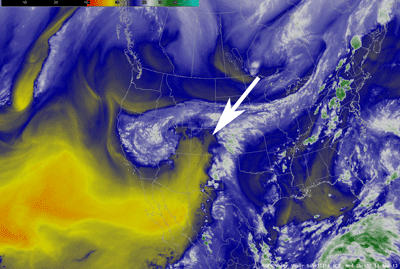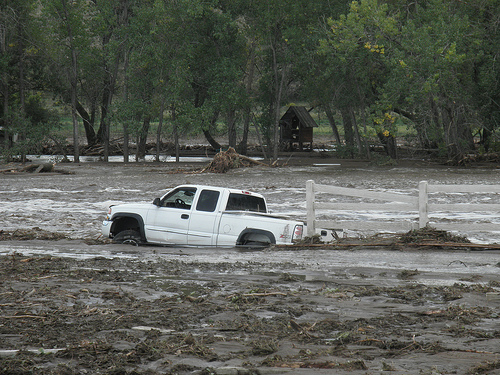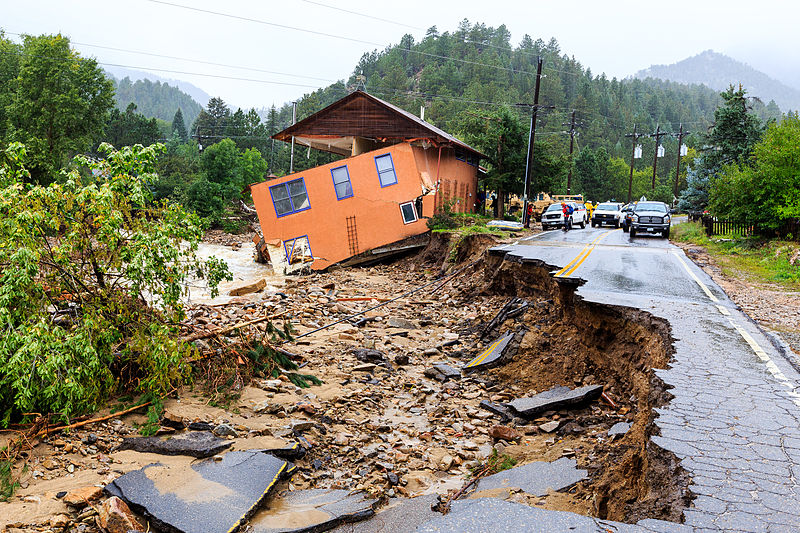Heavy rain and raging rivers
On September 12, 2013, Boulder, Colorado received nearly ten inches of rain in one day. Ten inches is a ton of rain! To put it in perspective, this part of Colorado usually gets only 20 inches of rain in an entire year.
This huge amount of rain was responsible for record-breaking floods that damaged many roads and left many people without homes. There were two reasons for these disastrous floods: rain caused by a mass of moist air sucked into the high rocky mountains by a low-pressure system, and the steep canyon walls that this water had to escape through.
Warm air can hold a lot more water than cold air. When warm air gets forced by the terrain into higher, colder altitudes, it has to remove some of its moisture by raining. Think of the air as a sponge that is slowly getting squeezed as it gets colder.
Rain forms this way in mountainous regions all the time, though. However, the rain that caused the Colorado flooding was different. It was caused by a large low-pressure system that stayed put for many days. The flow around this system sucked the extremely moist air from the south into the northern Colorado foothills. The low-pressure system caused the moist air to rise, cool and rain. The rain continued from the evening of the 11th to the morning of the 12th. It rained as much as 2 inches per hour during this time.

The weather satellites GOES-13 and GOES-15 were used to create this movie of warm moist air moving northward from the Pacific Ocean (yellow) meeting the cold air over Boulder County, Colorado. The arrow shows the approximate location of Boulder, Colorado. Credit: NOAA/Cooperative Institute for Meteorological Satellite Studies.
All of this rain fell over a large area of northern Colorado. Because the rain had to escape through the canyons in this mountainous area, every river in the northern foothills became a raging, destructive river.
These raging, high rivers forced many people to be evacuated from their homes and their towns. Floods as large as this one are extremely rare. This flood was one for the record books—it shattered almost every existing flood record for the area.
Are you prepared for a natural disaster? Check out When disaster strikes to learn what you can do to be prepared.






